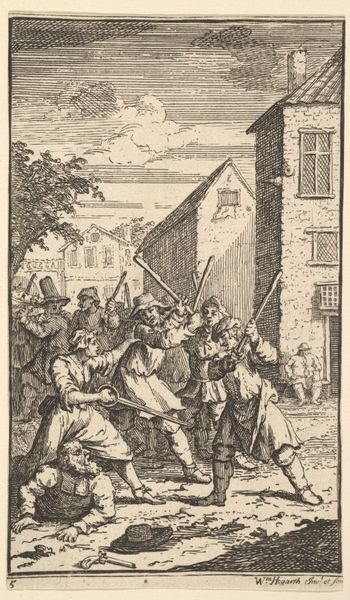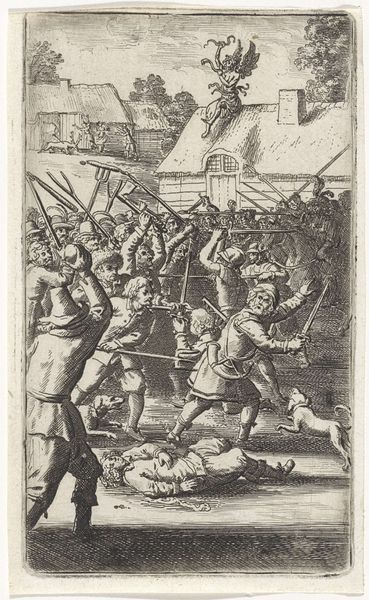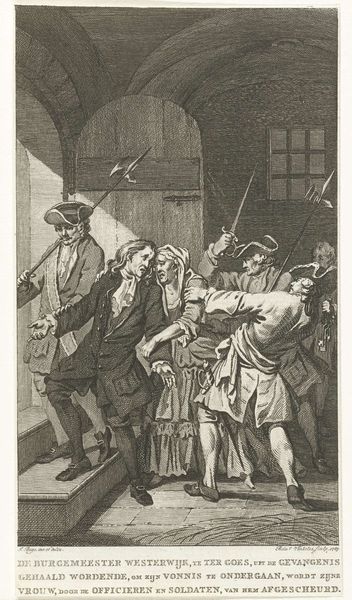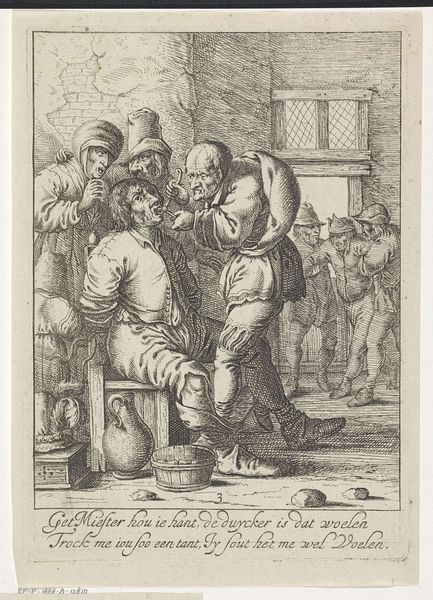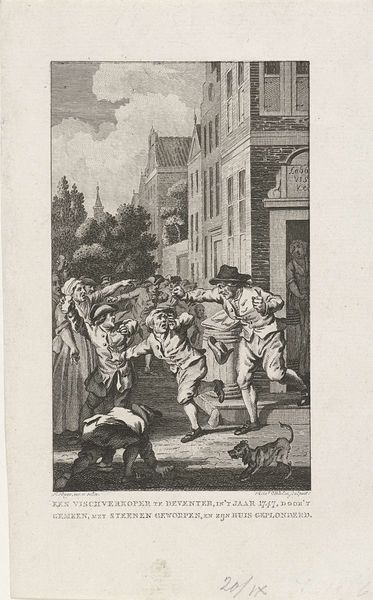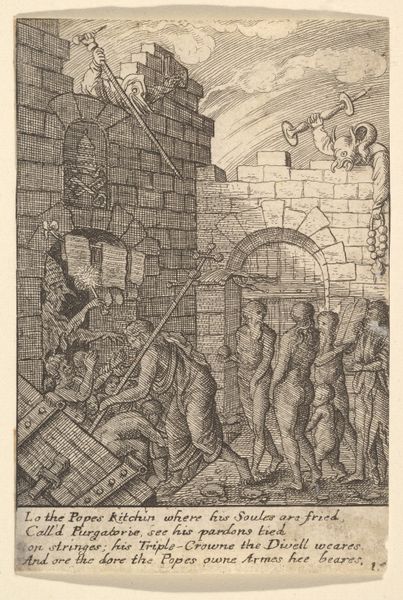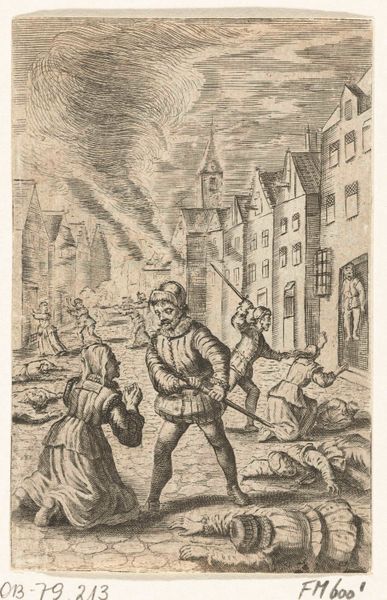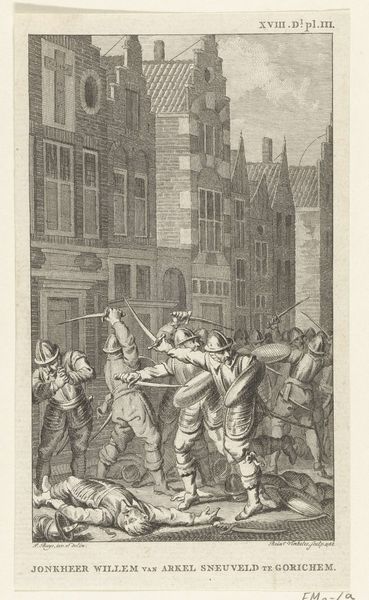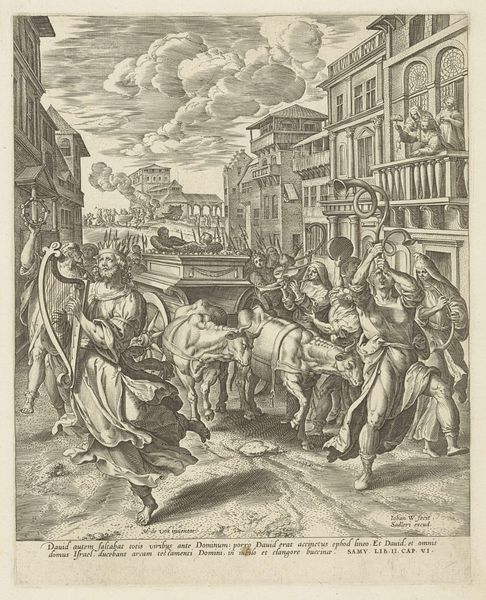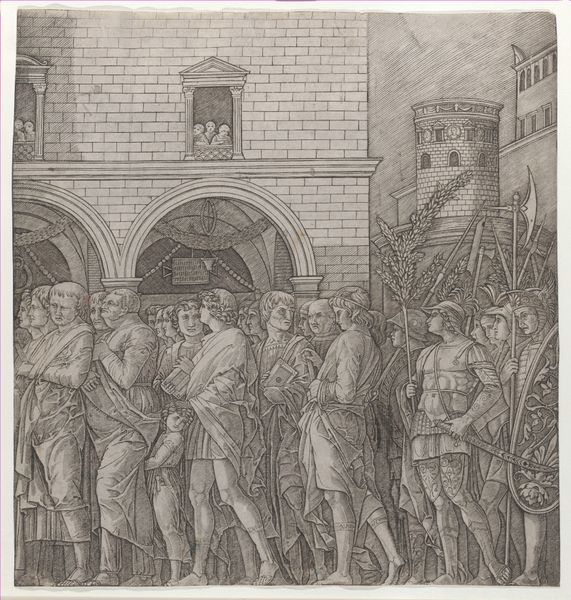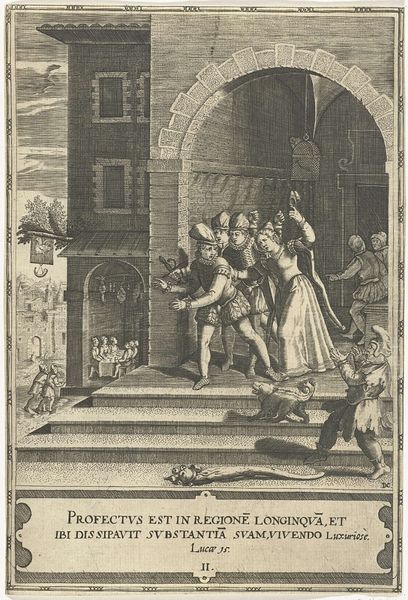
Moord door de Spanjaarden in de straten van Naarden, 1572 1658 - 1660
0:00
0:00
janvantroyen
Rijksmuseum
print, etching
#
narrative-art
#
baroque
# print
#
etching
#
figuration
#
cityscape
#
history-painting
#
realism
Dimensions: height 125 mm, width 81 mm
Copyright: Rijks Museum: Open Domain
Curator: The print before us, "Moord door de Spanjaarden in de straten van Naarden, 1572," created by Jan van Troyen between 1658 and 1660, presents a brutal historical event. It's an etching, offering a glimpse into a dark moment in Dutch history now housed at the Rijksmuseum. Editor: My initial reaction is one of intense distress. The scene feels claustrophobic, amplified by the density of figures and the harsh, unforgiving lines of the etching. There is an almost performative nature in how the Spaniards are presented enacting this gruesome murder, while citizens are actively fleeing or dead. It is absolutely devastating. Curator: Indeed. Van Troyen depicts the massacre in Naarden, where Spanish soldiers murdered a large portion of the city's population. It’s crucial to remember the historical context: this atrocity took place during the Eighty Years' War. Naarden was targeted because it refused to surrender to the Spanish forces. Editor: Looking at the figures, the abject horror on their faces is really unsettling, how each are captured in an individual state of anguish. One sees not just the literal depiction of violence but the deep social trauma of war rendered on a human level. The towering buildings almost appear to be looming over the victims, as if indifferent. Curator: The architectural details, typical of Dutch cityscapes, sharply contrast with the chaotic violence in the foreground. Van Troyen uses this stark juxtaposition to amplify the tragedy—emphasizing the desecration of what was once a peaceful town. Consider that this print, despite its age, speaks to the very contemporary concerns surrounding war crimes and justice. Editor: I completely agree. And by portraying such events in accessible prints like these, the artist opens a dialogue about the nature of political power and the consequences of unchecked authority. The circulation of this image surely served to inform the public of such cruelty in the ongoing war against the Spaniards. Curator: Precisely. "Moord door de Spanjaarden in de straten van Naarden, 1572" serves as a poignant reminder of the past. By exploring this print, we can reflect on the ethical implications of conflict, especially in these trying times we live in today. Editor: Analyzing artwork through intersectional narratives opens up vital conversations around collective memory, how it is shaped and exploited through conflict and artistic depictions alike. And hopefully that brings some needed perspective on events happening globally even now.
Comments
No comments
Be the first to comment and join the conversation on the ultimate creative platform.
